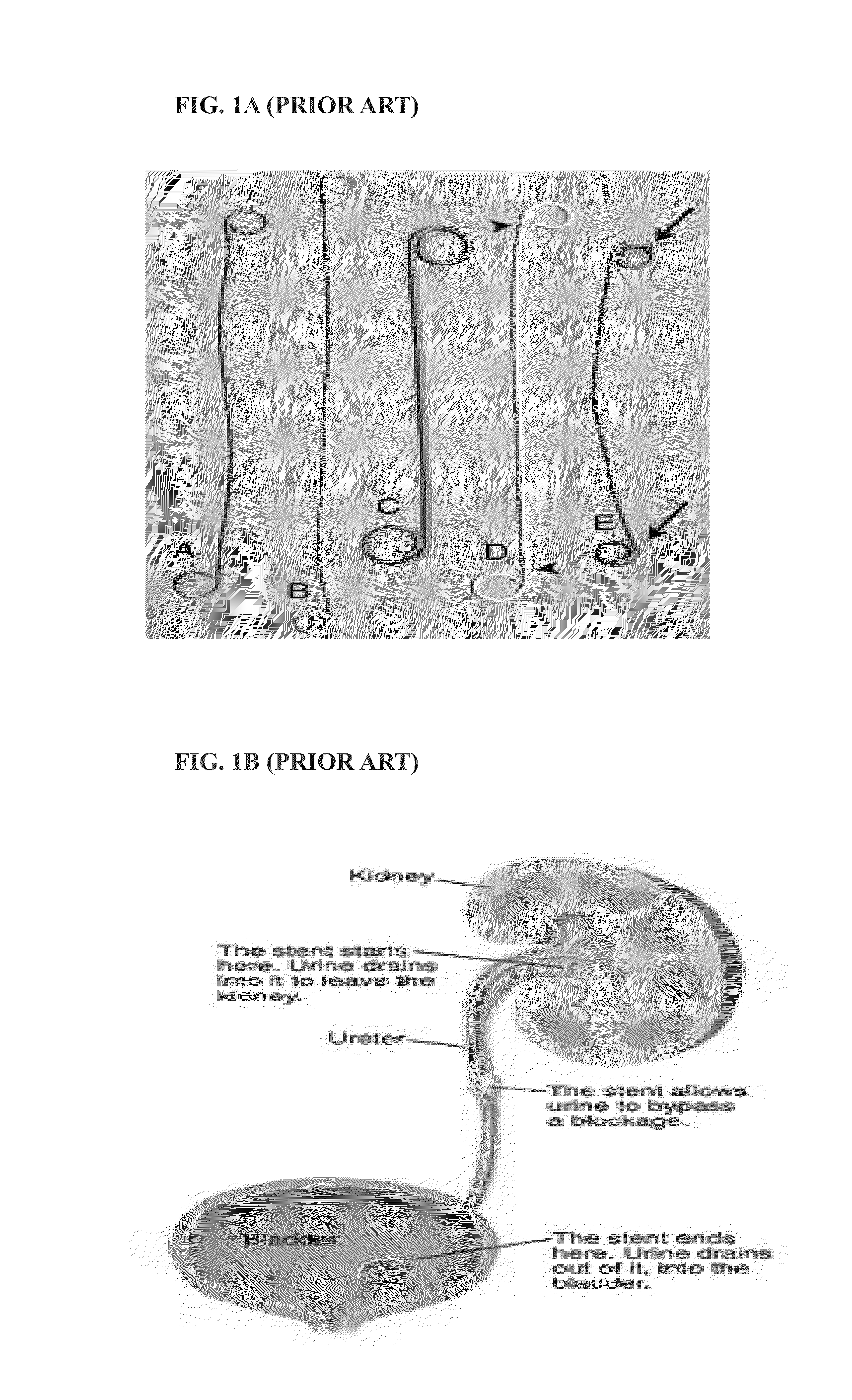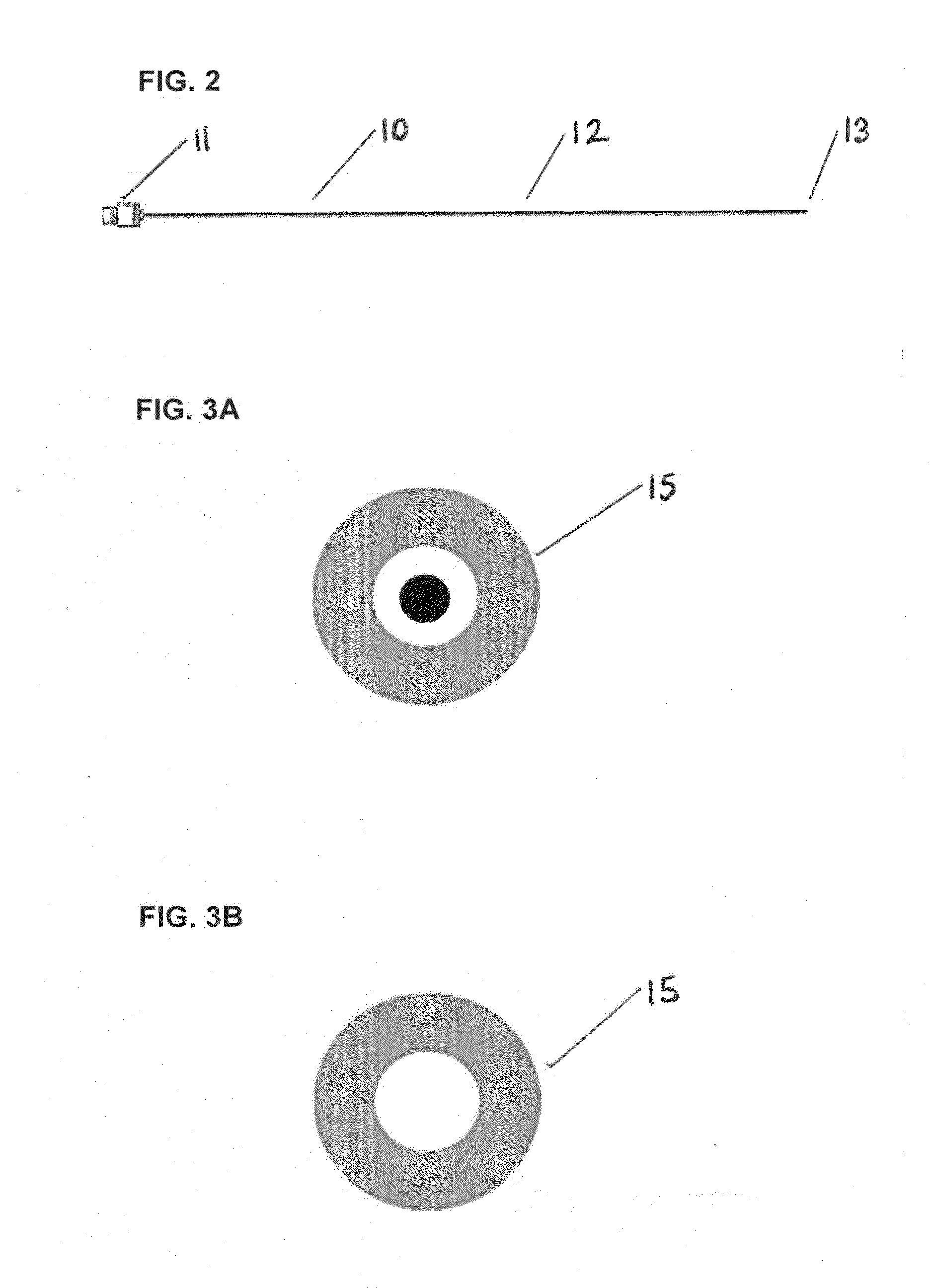Implantable stent
a technology of implantable stents and stents, which is applied in the field of implantable medical devices, can solve the problems of difficult removal of stents, product encrustation is generally susceptible to higher levels of encrustation than metal stents, and is rarely suitable for the intended use in animals. , to achieve the effect of preventing deformation, and reducing the risk of stent damag
- Summary
- Abstract
- Description
- Claims
- Application Information
AI Technical Summary
Benefits of technology
Problems solved by technology
Method used
Image
Examples
embodiments
[0040]FIG. 1A shows prior art of ureteral stents. FIG. 1B shows the function of ureteral stents.
[0041]Typically, these stents are placed in a minimally invasive manner by passing the stent over a guide wire that has been positioned in the renal pelvis of the kidney. A pusher is used to advance the stent along the wire from the urethra to the bladder and subsequently into the ureter.
[0042]Other methods for stent placement are percutaneously where the physician accesses the ureter through the skin of patient using nephrostomy methods.
[0043]FIG. 2 displays the stent inserter and outer sheath. An embodiment of the design detailed in FIG. 2 is the small diameter of the outer sheath. The stent inserter reference number in FIG. 2 is 10. This significantly reduces trauma to the patient during the procedure and is specifically suitable for patients with ureters that are sized in the range from 0.3-0.7 mm (0.011-0.027″). Other physician benefits are the highly radiopaque properties of the ste...
PUM
 Login to View More
Login to View More Abstract
Description
Claims
Application Information
 Login to View More
Login to View More - R&D
- Intellectual Property
- Life Sciences
- Materials
- Tech Scout
- Unparalleled Data Quality
- Higher Quality Content
- 60% Fewer Hallucinations
Browse by: Latest US Patents, China's latest patents, Technical Efficacy Thesaurus, Application Domain, Technology Topic, Popular Technical Reports.
© 2025 PatSnap. All rights reserved.Legal|Privacy policy|Modern Slavery Act Transparency Statement|Sitemap|About US| Contact US: help@patsnap.com



